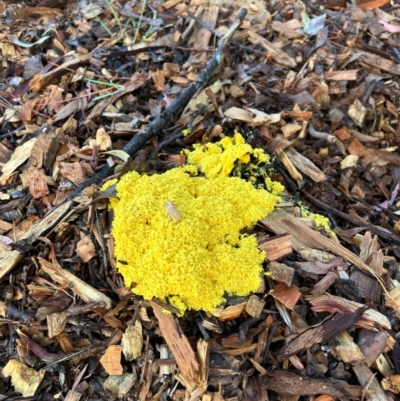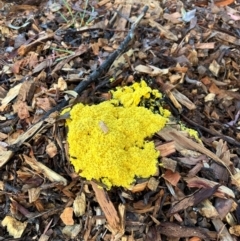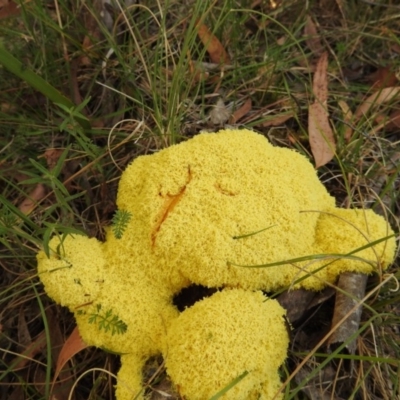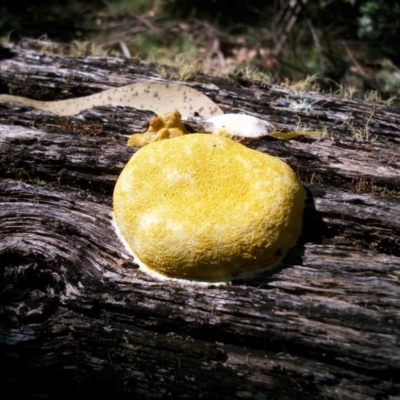Fuligo septica (Scrambled egg slime)
Occurrs as slimy to crust-like sheets or cushion-like iregular masses on stumps, logs, living plants, and wood mulches in landscapes. This slime mould first appears as a white to yellow slimy mass with various dimensions. The "flesh" transforms into a crusty, cake-like mass of darker and variable color. The brittle crust easily breaks away to reveal a dull-black spore mass. Fuligo septica produces the largest spore-producing structure of
any known slime mold.
Plasmodium:- bright yellow or white.
Sporangia:- Aethalia pulvinate, varying in size from 2 mm. to more than 30 cm., various shades of yellow but can also be greenish, reddish, and brown to deep chocolate.
The sporangia are intricately coiled and anastomosing, but often more or less separated in the mass, with spaces in between;
The cortex can be thick or thin, a dense crust of lime or undeveloped Plasmodium, loose or firm, or absent entirely; with scattered deposits of lime-granules.
Capillitium:- scanty or abundant, consisting of a loose network of slender hyaline threads, more or less expanded at the axils, with fusiform or branching lime-knots, usually white but often yellow, or occasionally reddish or brownish.
Spores:- Purplish-brown smooth to minutely spiny
Fuligo septica is listed in the following regions:
Canberra & Southern Tablelands | South Coast | Tasmania
Species information
- Fuligo septica Scientific name
- Scrambled egg slime Common name
- Not Sensitive
- Local native
- Non-invasive or negligible
- Up to 1483.99m Recorded at altitude
- Machine learning
Location information
-
Maps
ANBG Aranda Bushland Blue Gum Point to Attunga Bay Bungonia Crown Reserve Emu Creek Flea Bog Flat to Emu Creek Corridor Googong Foreshore Goulburn Mulwaree Council Hughes Garran Woodland Hughes Grassy Woodland Isaacs Ridge and Nearby Isaacs Ridge Offset Area Kosciuszko National Park Lake Burley Griffin West Mongarlowe River Mulligans Flat Namadgi National Park National Arboretum Forests Nunnock Swamp Red Hill to Yarralumla Creek Rugosa South East Forest National Park Tidbinbilla Nature Reserve Umbagong District Park Wandiyali-Environa Conservation Area Yanununbeyan National Park -
Places
Bonner, ACT Borough, NSW Braidwood, NSW Bungonia, NSW Conder, ACT Murrumbateman, NSW Paddys River, ACT Pilot Wilderness, NSW































































































































